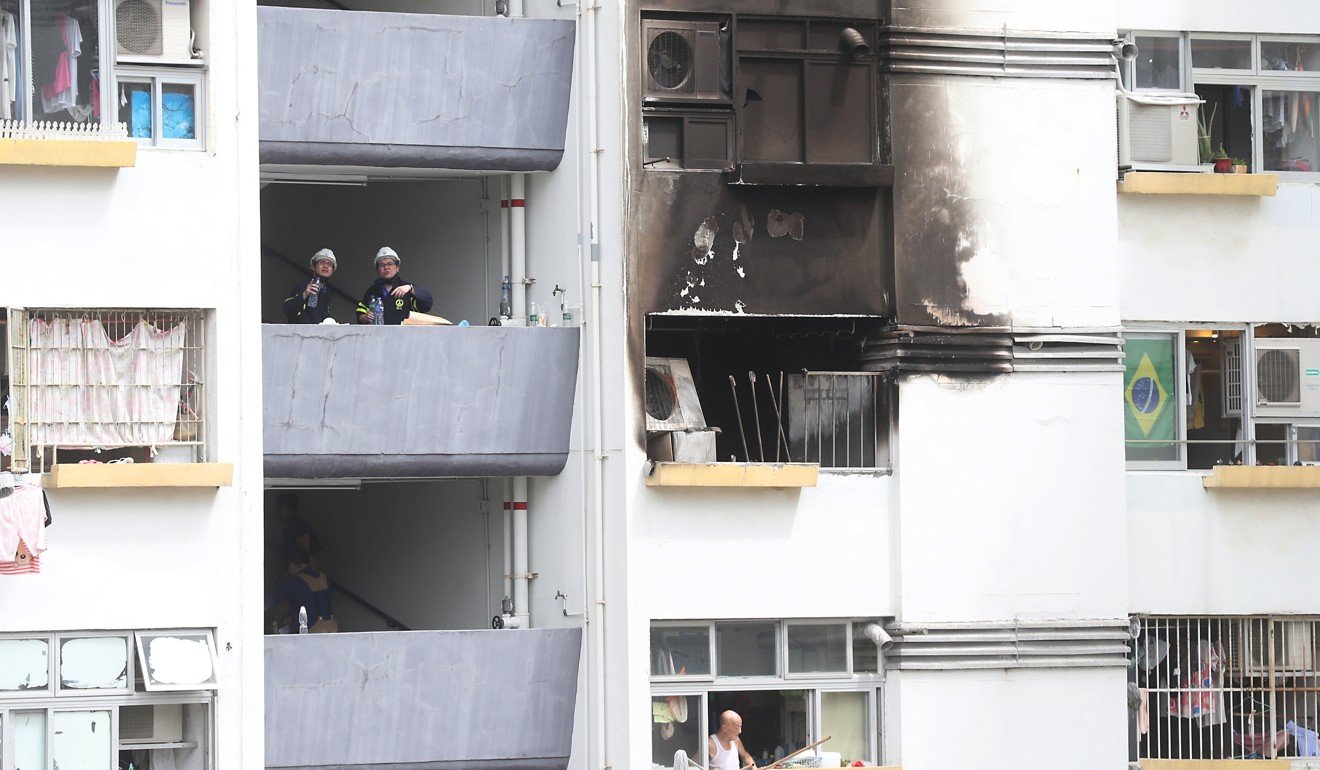
Man killed neighbour’s family by setting fire to their flat before burning own home in suicide, Hong Kong inquest hears
- Tragic incident in 2016 claimed lives of couple in 20s and three-year-old daughter, with experts suggesting separate blazes were set by fourth victim who lived opposite
- Two days of testimonies earlier by family members and neighbours raised instances of threats and disputes between occupants
An inquest into a blaze that killed a man and a family of three at a public housing estate three years ago heard on Friday that the man might have set fire to his neighbour’s home before killing himself.
The theory was raised by a government forensic scientist on the third day of the review into the cause of the fire at Kwun Lung Lau in Kennedy Town. The incident killed Hui Wai-chung, 63, and the family next door on the 13th floor – Huang Zhiqiang, 26, his wife Wu Qianxin, 25, and their three-year-old daughter Huang Yilin.
Killer arsonist emptied two bottles of paint thinner before setting flat ablaze
Following two days of testimonies from surviving family members and neighbours – who spoke of threats and disputes – forensic scientist Chan Ho-yin on Friday offered his take.
“[Hui] killed intentionally and then returned to his own flat to commit suicide,” he said. Chan reached his conclusion based on findings at the scene.
[Hui] killed intentionally and then returned to his own flat to commit suicide
The court heard the blaze had engulfed the homes of Hui and the Huangs in the early hours of July 16, 2016, causing Hui, Wu and her daughter to die in their own flat. Huang fell to his death.
Chan said on Friday that on closer examination, it appeared that there were two separate fires in the case, and both had been deliberately set.
He said in flat 1359, where the Huangs lived, the fire was likely to have originated from the sofa, where substances in thinner, a highly flammable liquid, were found.
He suggested that the fire might have spread so quickly that it blocked the exit. As the mother and daughter died among the flames, the father managed to escaped but fell to his death while fleeing for his life.

In Hui’s 1364 flat opposite, someone had set fire to a bookshelf, using thinner. The court earlier heard that Hui, who was jailed for attacking a neighbour before, had threatened the Huangs, a mainland family, months before the incident.
The court was also told that Hui held an anti-immigrant stance and had been unhappy with the noise from his neighbours.

“The case should be considered in the direction of a murder, and then suicide,” Chan said on Friday. “The greatest suspect would be [Hui].”
Forensic pathologist Tsang Chak-chi, who performed autopsies on the deceased, said she found a high concentration of carbon monoxide in Wu’s blood, meaning that she had inhaled a considerable amount of smoke before she died.
Public housing tenant whose flat went up in flames, killing four, had violent past, inquest hears
The findings also indicated she had tried to run away from the flames, as there would be more smoke fanning out from the fire as it burned.
This was in contrast to what was found in Hui’s body – Tsang said there was no carbon dioxide found in the man’s lungs, implying he was close to the fire and was probably directly killed by it.
Coroner Ko Wai-hung will return his verdict and findings on Tuesday.

